[English] 日本語
 Yorodumi
Yorodumi- PDB-2qrs: Crystal Structure of a single chain trimer composed of the MHC I ... -
+ Open data
Open data
- Basic information
Basic information
| Entry | Database: PDB / ID: 2qrs | ||||||
|---|---|---|---|---|---|---|---|
| Title | Crystal Structure of a single chain trimer composed of the MHC I heavy chain H-2Kb Y84A, beta-2microglobulin, and ovalbumin-derived peptide. | ||||||
 Components Components | H-2 class I histocompatibility antigen K-B alpha chain, Beta-2 microglobulin, ovalbumin-derived peptide | ||||||
 Keywords Keywords | IMMUNE SYSTEM / MHC-I / Single Chain / Ovalbumin / Glycoprotein / Immune response / Membrane / MHC I / Transmembrane | ||||||
| Function / homology |  Function and homology information Function and homology informationEndosomal/Vacuolar pathway / DAP12 interactions / Antigen Presentation: Folding, assembly and peptide loading of class I MHC / ER-Phagosome pathway / DAP12 signaling / Immunoregulatory interactions between a Lymphoid and a non-Lymphoid cell / antigen processing and presentation of exogenous peptide antigen via MHC class I / inner ear development / antigen processing and presentation of endogenous peptide antigen via MHC class I via ER pathway, TAP-dependent / cellular defense response ...Endosomal/Vacuolar pathway / DAP12 interactions / Antigen Presentation: Folding, assembly and peptide loading of class I MHC / ER-Phagosome pathway / DAP12 signaling / Immunoregulatory interactions between a Lymphoid and a non-Lymphoid cell / antigen processing and presentation of exogenous peptide antigen via MHC class I / inner ear development / antigen processing and presentation of endogenous peptide antigen via MHC class I via ER pathway, TAP-dependent / cellular defense response / Neutrophil degranulation / lumenal side of endoplasmic reticulum membrane / cellular response to iron(III) ion / negative regulation of forebrain neuron differentiation / antigen processing and presentation of exogenous protein antigen via MHC class Ib, TAP-dependent / iron ion transport / peptide antigen assembly with MHC class I protein complex / regulation of iron ion transport / regulation of erythrocyte differentiation / HFE-transferrin receptor complex / response to molecule of bacterial origin / MHC class I peptide loading complex / T cell mediated cytotoxicity / positive regulation of T cell cytokine production / antigen processing and presentation of endogenous peptide antigen via MHC class I / MHC class I protein complex / peptide antigen binding / positive regulation of receptor-mediated endocytosis / negative regulation of neurogenesis / cellular response to nicotine / positive regulation of T cell mediated cytotoxicity / multicellular organismal-level iron ion homeostasis / phagocytic vesicle membrane / negative regulation of epithelial cell proliferation / sensory perception of smell / positive regulation of cellular senescence / T cell differentiation in thymus / negative regulation of neuron projection development / protein refolding / protein homotetramerization / amyloid fibril formation / intracellular iron ion homeostasis / learning or memory / defense response to bacterium / external side of plasma membrane / structural molecule activity / Golgi apparatus / protein homodimerization activity / extracellular space / cytosol Similarity search - Function | ||||||
| Biological species |  | ||||||
| Method |  X-RAY DIFFRACTION / X-RAY DIFFRACTION /  SYNCHROTRON / SYNCHROTRON /  MOLECULAR REPLACEMENT / Resolution: 2 Å MOLECULAR REPLACEMENT / Resolution: 2 Å | ||||||
 Authors Authors | Mitaksov, V.E. / Fremont, D.H. | ||||||
 Citation Citation |  Journal: Chem.Biol. / Year: 2007 Journal: Chem.Biol. / Year: 2007Title: Structural engineering of pMHC reagents for T cell vaccines and diagnostics. Authors: Mitaksov, V. / Truscott, S.M. / Lybarger, L. / Connolly, J.M. / Hansen, T.H. / Fremont, D.H. | ||||||
| History |
|
- Structure visualization
Structure visualization
| Structure viewer | Molecule:  Molmil Molmil Jmol/JSmol Jmol/JSmol |
|---|
- Downloads & links
Downloads & links
- Download
Download
| PDBx/mmCIF format |  2qrs.cif.gz 2qrs.cif.gz | 185 KB | Display |  PDBx/mmCIF format PDBx/mmCIF format |
|---|---|---|---|---|
| PDB format |  pdb2qrs.ent.gz pdb2qrs.ent.gz | 145.6 KB | Display |  PDB format PDB format |
| PDBx/mmJSON format |  2qrs.json.gz 2qrs.json.gz | Tree view |  PDBx/mmJSON format PDBx/mmJSON format | |
| Others |  Other downloads Other downloads |
-Validation report
| Summary document |  2qrs_validation.pdf.gz 2qrs_validation.pdf.gz | 441.5 KB | Display |  wwPDB validaton report wwPDB validaton report |
|---|---|---|---|---|
| Full document |  2qrs_full_validation.pdf.gz 2qrs_full_validation.pdf.gz | 462.3 KB | Display | |
| Data in XML |  2qrs_validation.xml.gz 2qrs_validation.xml.gz | 39 KB | Display | |
| Data in CIF |  2qrs_validation.cif.gz 2qrs_validation.cif.gz | 57.9 KB | Display | |
| Arichive directory |  https://data.pdbj.org/pub/pdb/validation_reports/qr/2qrs https://data.pdbj.org/pub/pdb/validation_reports/qr/2qrs ftp://data.pdbj.org/pub/pdb/validation_reports/qr/2qrs ftp://data.pdbj.org/pub/pdb/validation_reports/qr/2qrs | HTTPS FTP |
-Related structure data
| Related structure data | 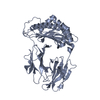 2qriC 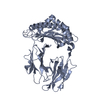 2qrtC 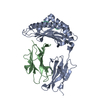 1rjyS C: citing same article ( S: Starting model for refinement |
|---|---|
| Similar structure data |
- Links
Links
- Assembly
Assembly
| Deposited unit | 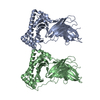
| ||||||||
|---|---|---|---|---|---|---|---|---|---|
| 1 | 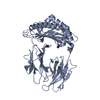
| ||||||||
| 2 | 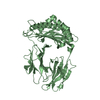
| ||||||||
| Unit cell |
| ||||||||
| Details | There are two biological assemblies per assymentric unit |
- Components
Components
| #1: Protein | Mass: 46974.273 Da / Num. of mol.: 2 Fragment: Fusion protein of ovalbumin-derived peptide, linker, Beta-2 microglobulin, linker, and H-2 class I histocompatibility antigen K-B alpha chain extracellular domain Mutation: Y105A Source method: isolated from a genetically manipulated source Source: (gene. exp.)   References: UniProt: P01901, UniProt: Q91XJ8, UniProt: P01887*PLUS #2: Water | ChemComp-HOH / | Has protein modification | Y | |
|---|
-Experimental details
-Experiment
| Experiment | Method:  X-RAY DIFFRACTION / Number of used crystals: 1 X-RAY DIFFRACTION / Number of used crystals: 1 |
|---|
- Sample preparation
Sample preparation
| Crystal | Density Matthews: 2.59 Å3/Da / Density % sol: 52.52 % |
|---|---|
| Crystal grow | Temperature: 298 K / Method: vapor diffusion, hanging drop / pH: 6.4 Details: 14% PEG 6000, 100 mM MES, pH 6.4, VAPOR DIFFUSION, HANGING DROP, temperature 298K |
-Data collection
| Diffraction | Mean temperature: 100 K |
|---|---|
| Diffraction source | Source:  SYNCHROTRON / Site: SYNCHROTRON / Site:  APS APS  / Beamline: 19-ID / Wavelength: 0.989 Å / Beamline: 19-ID / Wavelength: 0.989 Å |
| Detector | Type: ADSC QUANTUM 315 / Detector: CCD / Date: Oct 1, 2004 |
| Radiation | Protocol: SINGLE WAVELENGTH / Monochromatic (M) / Laue (L): M / Scattering type: x-ray |
| Radiation wavelength | Wavelength: 0.989 Å / Relative weight: 1 |
| Reflection | Resolution: 1.9→50 Å / Num. obs: 74866 / Redundancy: 6.3 % / Rsym value: 0.097 / Net I/σ(I): 15.9 |
| Reflection shell | Resolution: 1.9→1.97 Å / Mean I/σ(I) obs: 2.61 / Rsym value: 0.546 |
- Processing
Processing
| Software |
| ||||||||||||
|---|---|---|---|---|---|---|---|---|---|---|---|---|---|
| Refinement | Method to determine structure:  MOLECULAR REPLACEMENT MOLECULAR REPLACEMENTStarting model: PDB entry 1RJY Resolution: 2→20 Å /
| ||||||||||||
| Refinement step | Cycle: LAST / Resolution: 2→20 Å
|
 Movie
Movie Controller
Controller


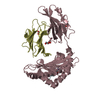
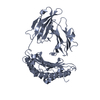
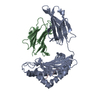
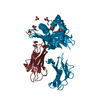
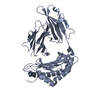

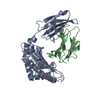
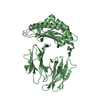
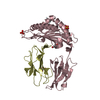
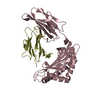
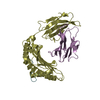

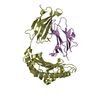
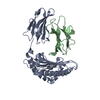
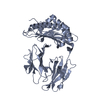

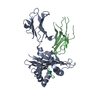
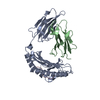
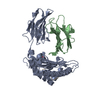
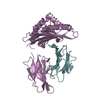
 PDBj
PDBj










